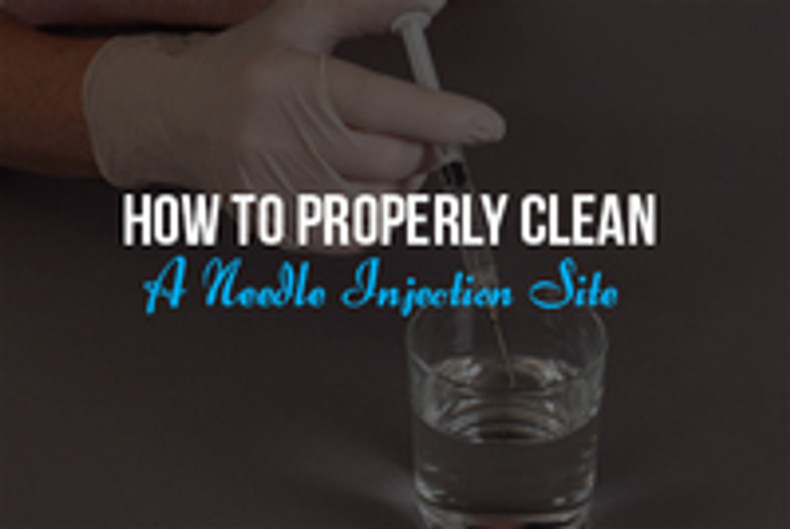
Guide to Properly Cleaning Your Needle Injection Site
Injections are the fastest way to get a substance into the bloodstream, such as with medication to treat a medical problem or a vaccine to prevent a disease. Injections are also useful when trying to inject products just below the skin or into the muscle, whether using a needle for an intramuscular injection or to numb an area of tissue. Regardless of whether you're using a needle to place a substance into or remove a sample out of the body, you should always carefully follow proper sanitation techniques.
Purpose of Cleaning
Various bacteria, viruses and fungi are present on your skin at anytime. While they may not cause a problem sitting on the surface of the skin, injecting a needle provides a direct path from the skin into the tissues and bloodstream. When a disinfectant is applied to the skin, it kills any potential pathogens. Disinfecting prevents potential infections as well as reduces the risk of forming cutaneous and subcutaneous abscesses.
Washing Hands
Properly cleaning a needle injection site starts with cleaning your hands with antibacterial soap and running water. Apply soap vigorously for at least 15 seconds. Make sure to get in between fingers and on both the front and back of the hand before rinsing. Turn the faucet off with a clean towel to prevent introducing pathogens back to the hands. You can also use gloves for further protection.
Site Disinfection
 Cleaning the injection site requires alcohol swabs. Remove the alcohol swab from its packaging and place against the injection site. Use firm circular motions to apply the alcohol to the area starting at the center and moving out in a circular motion. Continue until you've disinfected an area approximately 2 inches in diameter. Due to its low evaporation point, the alcohol will evaporate quickly. As such, let the alcohol dry for about 20 seconds to help lessen any sting felt by the alcohol as the needle penetrates the skin.
Cleaning the injection site requires alcohol swabs. Remove the alcohol swab from its packaging and place against the injection site. Use firm circular motions to apply the alcohol to the area starting at the center and moving out in a circular motion. Continue until you've disinfected an area approximately 2 inches in diameter. Due to its low evaporation point, the alcohol will evaporate quickly. As such, let the alcohol dry for about 20 seconds to help lessen any sting felt by the alcohol as the needle penetrates the skin.
If performing a self-injection, make sure to not only clean the injection area but also have a firm understanding of where your medication should be injected and how to properly insert the needle. Following these steps helps prevent potentially serious infections and other dangers. If you notice any abnormal swelling, lingering pain or bleeding that will not stop at the injection site, contact your doctor as soon as possible as these may be signs of a potential problem.


